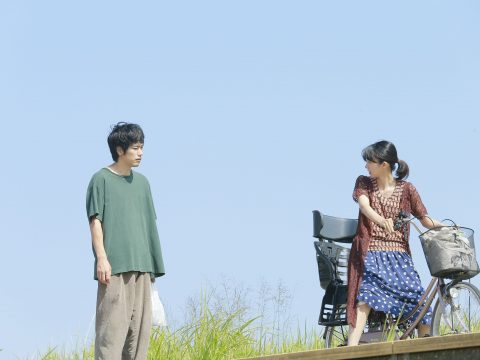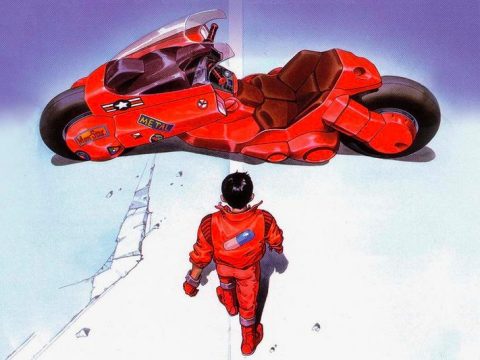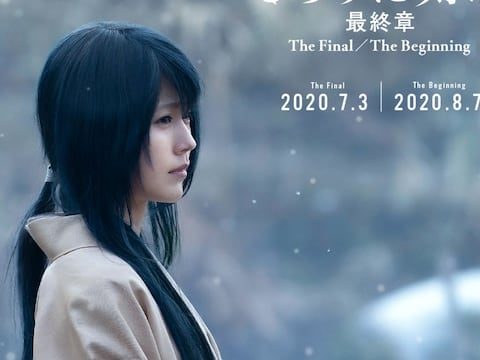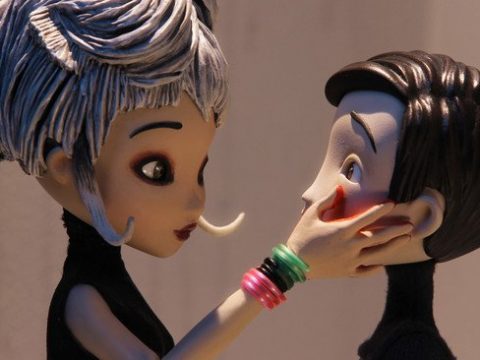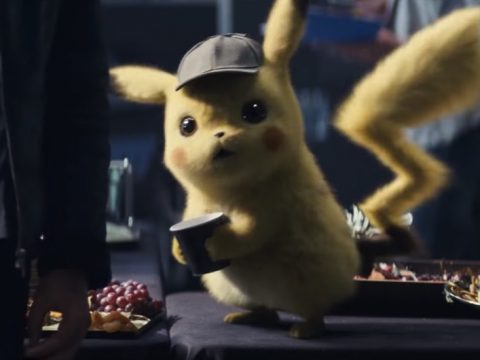 Ghidorah the Three-Headed Monster is the original Toho monster team-up, in which Godzilla, Rodan, and Mothra pool their resources to defeat the invasion of King Ghidorah, an evil extraterrestrial determined to destroy the Earth. Ghidorah arrives on Earth in a meteorite-actually a space egg-that periodically warps gravity and plays havoc with the local electromagnetic field. A team of scientists led by Professor Miura (Hiroshi Koizumi) is dispatched to investigate. Meanwhile, international disaster threatens when a plane transporting the crown princess of the tiny nation of Selgina mysteriously explodes en route to Japan; the princess reappears wearing fisherman’s clothing and waxing prophetical and claiming to be a re-embodied soothsayer from Venus. Will her Japanese security liaison Detective Shindo (Yosuku Natsuki) be able to protect her from a gang of ruthless assassins with a penchant for flamboyant Elizabethan ruffs? Who cares? This is all just window dressing once the monsters arrive on the scene.
Ghidorah the Three-Headed Monster is the original Toho monster team-up, in which Godzilla, Rodan, and Mothra pool their resources to defeat the invasion of King Ghidorah, an evil extraterrestrial determined to destroy the Earth. Ghidorah arrives on Earth in a meteorite-actually a space egg-that periodically warps gravity and plays havoc with the local electromagnetic field. A team of scientists led by Professor Miura (Hiroshi Koizumi) is dispatched to investigate. Meanwhile, international disaster threatens when a plane transporting the crown princess of the tiny nation of Selgina mysteriously explodes en route to Japan; the princess reappears wearing fisherman’s clothing and waxing prophetical and claiming to be a re-embodied soothsayer from Venus. Will her Japanese security liaison Detective Shindo (Yosuku Natsuki) be able to protect her from a gang of ruthless assassins with a penchant for flamboyant Elizabethan ruffs? Who cares? This is all just window dressing once the monsters arrive on the scene.
Even decades after his debut here, the King Ghidorah creature is an impressive cinematic creation, brought to life through a combination of suitmation and puppetry. Shoichi Hirose, the actor inside the enormous costume, could only operate Ghidorah’s feet. All three heads, the wings, and both tails were operated externally by puppeteers controlling wires. Add Ghidorah’s brilliant golden color and his haunting, trilling shriek to this array of independently moving parts and an unsettling illusion of alien monstrosity results. Since Ghidorah’s appearance is essentially dragon-like, the end result is iconic, at once familiar and strange. And then there is the monster’s motivation: simply to destroy all life that it encounters. Makes Godzilla’s grudge against Tokyo look petty by comparison, doesn’t it? Ghidorah has already turned Venus into a barren chunk of dirt with an acid atmosphere, and now it’s Earth’s turn.
 Ghidorah the Three-Headed Monster is a milestone in Godzilla history, not only because it introduces Godzilla’s most popular, most powerful nemesis, but also because it is the first Godzilla film in which the Big G assumes the mantle of protector of the planet. From this point on until Godzilla’s resurrection in Godzilla 1985 which marked the beginning of the Heisei series, it’s all love and fluffy kittens for the everybody’s favorite atomic dinosaur … unless he’s being mind-controlled by extraterrestrials. But Godzilla’s conversion from world-scourge to friend of the Land of the Rising Sun is a rocky one, accomplished only through the intervention of baby Mothra. Picture this: Godzilla and Rodan are squabbling among themselves, vying for who gets the honors of smashing up whatever the marauding King Ghidorah neglects to wreck. Mothra arrives to scold them for being so selfish, encouraging them to put aside their differences to save the Earth. Godzilla and Rodan pout and sulk like preschoolers. The entire scene is translated from monster language into humanspeak by the Twin Fairies of Infant Island while the monsters pantomime furiously and mug for the cameras. It’s a tongue-in-cheek scene that arguably sets the mood for Godzilla’s monster politics from that point forward.
Ghidorah the Three-Headed Monster is a milestone in Godzilla history, not only because it introduces Godzilla’s most popular, most powerful nemesis, but also because it is the first Godzilla film in which the Big G assumes the mantle of protector of the planet. From this point on until Godzilla’s resurrection in Godzilla 1985 which marked the beginning of the Heisei series, it’s all love and fluffy kittens for the everybody’s favorite atomic dinosaur … unless he’s being mind-controlled by extraterrestrials. But Godzilla’s conversion from world-scourge to friend of the Land of the Rising Sun is a rocky one, accomplished only through the intervention of baby Mothra. Picture this: Godzilla and Rodan are squabbling among themselves, vying for who gets the honors of smashing up whatever the marauding King Ghidorah neglects to wreck. Mothra arrives to scold them for being so selfish, encouraging them to put aside their differences to save the Earth. Godzilla and Rodan pout and sulk like preschoolers. The entire scene is translated from monster language into humanspeak by the Twin Fairies of Infant Island while the monsters pantomime furiously and mug for the cameras. It’s a tongue-in-cheek scene that arguably sets the mood for Godzilla’s monster politics from that point forward.
Ghidorah the Three-Headed Monster is another solid release from Classic Media. Once again it includes both the original Japanese version of the film and the edited American adaptation, both with restored visuals in anamorphic widescreen. Also of interest is the commentary track on the American version of the film, hosted by film historian David Kalat. Kalat emphasizes the contributions of screen-writer Shinichi Sekizawa, contributions that he claims are often overshadowed by the work of director Ishiro Honda. Sekizawa, he argues, deserves equal credit for shaping Godzilla into the beloved franchise that it is today. Although I personally found the tone of the commentary to be a bit heavy handed, Kalat nonetheless packs the track with all sorts of useful information and anecdotes, making this commentary a must-listen-to feature in a must-purchase product for any aspiring G-fan.


